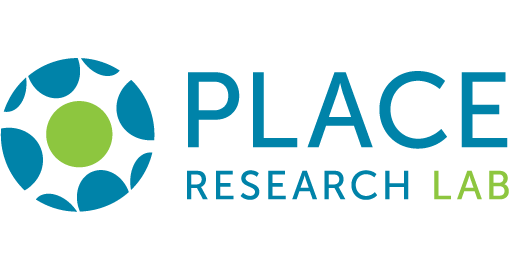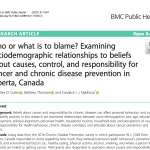
Good food and nutrition are essential to promoting the health of children and youth.
Healthy eating promotes child growth and development, learning and even the prevention of diet-related chronic diseases once believed to affect only adults, such as obesity, certain cancers, and Type 2 Diabetes (World Health Organization, 2016). Furthermore, the 2019 Global Burden of Disease data indicate that dietary risks rank second only to tobacco as contributors to premature mortality in Canada (Institute for Health Metrics and Evaluation, 2019).
Contrary to popular opinion, healthy eating is more than an individual choice and is influenced by the food environments in which we live. While policy makers have only just begun to formulate public policy responses, we model our work on previous successes in cancer prevention: the use of policy for tobacco control. Benchmarking to catalyze policy development for improving food environments holds potential to change cultural norms and increase healthy eating. Members of our team have extended the idea of benchmarking to the nutritional realm through developing Alberta’s Nutrition Report Card on Food Environments for Children and Youth (NRC). Indicators in five environments must: relate to policies or actions with potential to influence food environments, be policy-relevant and amenable to government influence, be feasible targets for data collection, and be supported by evidence of effectiveness and population-level impact (i.e. peer-reviewed studies), while highlighting opportunities for intervention and research.
Three main project goals of this five-year Alberta Innovates funded integrated research, training and knowledge translation collaborative project are to:
- Develop the provincial Alberta Nutrition Report Card (NRC), an annual assessment of how Alberta’s food environments and nutrition policies either support or create barriers to improving children’s eating practices and body weights.
- Assess the outcome and impact of the annual NRC on: decision-maker and public perceptions through the provincial, biennial Chronic Disease Prevention Survey; policy development through Nutrition Policy Scans (2017 and 2021); and prevalence of eating practices and childhood overweight/obesity.
- Develop and assess the process, outcomes and impact of engaging local communities in monitoring their own food environments through the development of Mini Nutrition Report Cards working with communities across Alberta collecting data on community-relevant benchmarks.
The NRC serves as a tool for all levels of government and NGOs, researchers, health professionals, corporations, and foundations to support and develop enhanced programming and policies, as well as to identify areas that require further action.
- Dr. Kim Raine, School of Public Health, University of Alberta (Nominated Principal Investigator)
- Dr. Candace Nykiforuk, School of Public Health, University of Alberta (Co-Lead)
- Dr. Katerina Maximova, School of Public Health, University of Alberta (Co-Lead)
- Dr. Dana Olstad, Community Health Sciences, University of Calgary (Co-Investigator)
- Dr. Kim Raine
- Dr. Candace Nykiforuk
- Dr. Katerina Maximova
- Dr. Dana Olstad
- Karen Boyd
- Laura Gougeon
- Leia Minaker
- Marie-Claude Paquette
- Rachel Prowse
- Jacob Shelley
- Sheila Tyminski
- A full list of infosheets is available through the Alberta Policy Coalition for Chronic Disease Prevention.
- A full list of reports is available through the Alberta Policy Coalition for Chronic Disease Prevention.
Selected media highlights include:
- Nutrition report card gives Alberta a C grade – again, October 1, 2020. CBC News. https://www.cbc.ca/news/canada/edmonton/annual-nutrition-report-card-gives-alberta-c-grade-again-1.5745489
- Alberta’s 2020 nutrition report card released, September 30, 2020. https://edmonton.citynews.ca/video/2020/09/30/albertas-2020-nutrition-report-card-released/
- Alberta receives a passing grade on its nutrition report card, barely, September 29, 2020. CTV News. https://edmonton.ctvnews.ca/alberta-receives-a-passing-grade-on-its-nutrition-report-card-barely-1.5125903
- Ferdinands, A.R., Olstad, D.L.; Milford, K.M., Maximova, K., Nykiforuk, C.I.J., Raine, K. D. (2020). A Nutrition Report Card on Food Environments for Children and Youth: Five Years of Experience from Canada. Public Health Nutrition, 23(12), 2088-2099. http://dx.doi.org/10.1017/S1368980020000130.
- Kongats, K., McGetrick, J.A., Raine, K.D., Voyer, C., Nykiforuk, C.I. (2019). Assessing general public and policy influencer support for healthy public policies to promote healthy eating at the population level in two Canadian provinces. Public health nutrition, 22(8), pp. 1492-1502. doi: 1017/S1368980018004068
- 2018-2021 Alberta Innovates
- Institute for Health Metrics and Evaluation (IHME). (2019). GBD Compare. Seattle, WA: IHME, University of Washington. http://www.healthdata.org/canada (accessed February 3, 2021).
- World Health Organization. (2016). Report of the commission on ending childhood obesity. Retrieved from Geneva, Switzerland: http://apps.who.int/iris/bitstream/handle/10665/204176/9789241510066_eng.pdf;jsessionid=5F2E0EBE40F52586C6E99BA95960190D?sequence=1 (accessed February 3, 2021).




